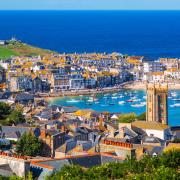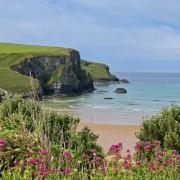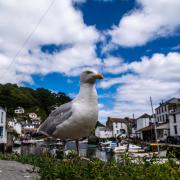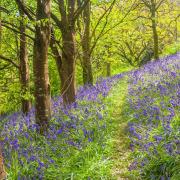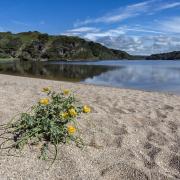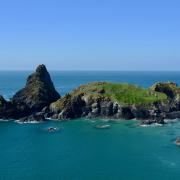Parts of Cornwall offer a wonderful chance to see – and photograph – astonishing starry skies

The beauty of winter. Cold, crisp weather, a frosty landscape and big clear night skies. Light pollution – think streetlamps, big industrial areas and large conurbations of housing all lit up – doesn’t feature too much in Cornwall, but more so than you may imagine.
We still have many areas of darkness where going exploring after the sun goes down rewards you with incredible, uninterrupted views of the planets, moon and stars. Not to mention witnessing the nocturnal nature and wildlife including owls, bats and foxes.
To be truly in darkness, even in Cornwall, and to get to see the night sky in its full glory there are few places that qualify.
One is Bodmin Moor, the first Area of Outstanding Natural Beauty to achieve International Dark Sky Park Status in the UK, following a successful bid to the International Dark-Sky Association by Cornwall Council and Caradon Observatory.

The designation officially recognised the exceptional quality of the night sky over the protected landscape.
This time of year, and into very early spring, star-gazing opportunities are at their best. Dark skies bring health and wellbeing benefits to both people and wildlife. With artificial light kept at a very low level, and as evenings draw in early, experiencing expansive starry skies and the illusive wildlife is a magical opportunity.
Another landscape, hoping to gain the International Dark Sky Park Status is West Penwith. Section 7 of Cornwall Area of Outstanding Natural Beauty is an ancient landscape and with its protected status remains largely unaffected by artificial light.
Our friends at Penwith Landscape Partnership (PLP) and the steering group behind the bid for International Dark Sky Park Status, have launched a new photographic competition aimed at capturing the nocturnal beauty of the Penwith landscape.

Entitled Outstanding Penwith at Night, the competition is seeking photographs that capture the beauty and wonder of the West Penwith section of the AONB at night – from its stunning starry skies to its nocturnal nature and wildlife, historical sites and anything else that portrays the glory of this area after dark.
Budding photographers can enter images from within this area of the Cornwall AONB taken within the last year, up until the closing date of midnight on 30 November. A panel of judges will decide the first, second and third place images, which will be published in a future edition of this magazine.
Full guidelines and rules, and the entry form for the competition, can be found online at penwithlandscape.com/dark-skies-2020 and entries should be emailed with an entry form to hello@penwithlandscape.com by midnight on 30 November 2020.
So, wrap up warm, breathe deeply and enjoy the wonderfully magical, expansive, uninterrupted Cornish night sky full of stars this winter.









